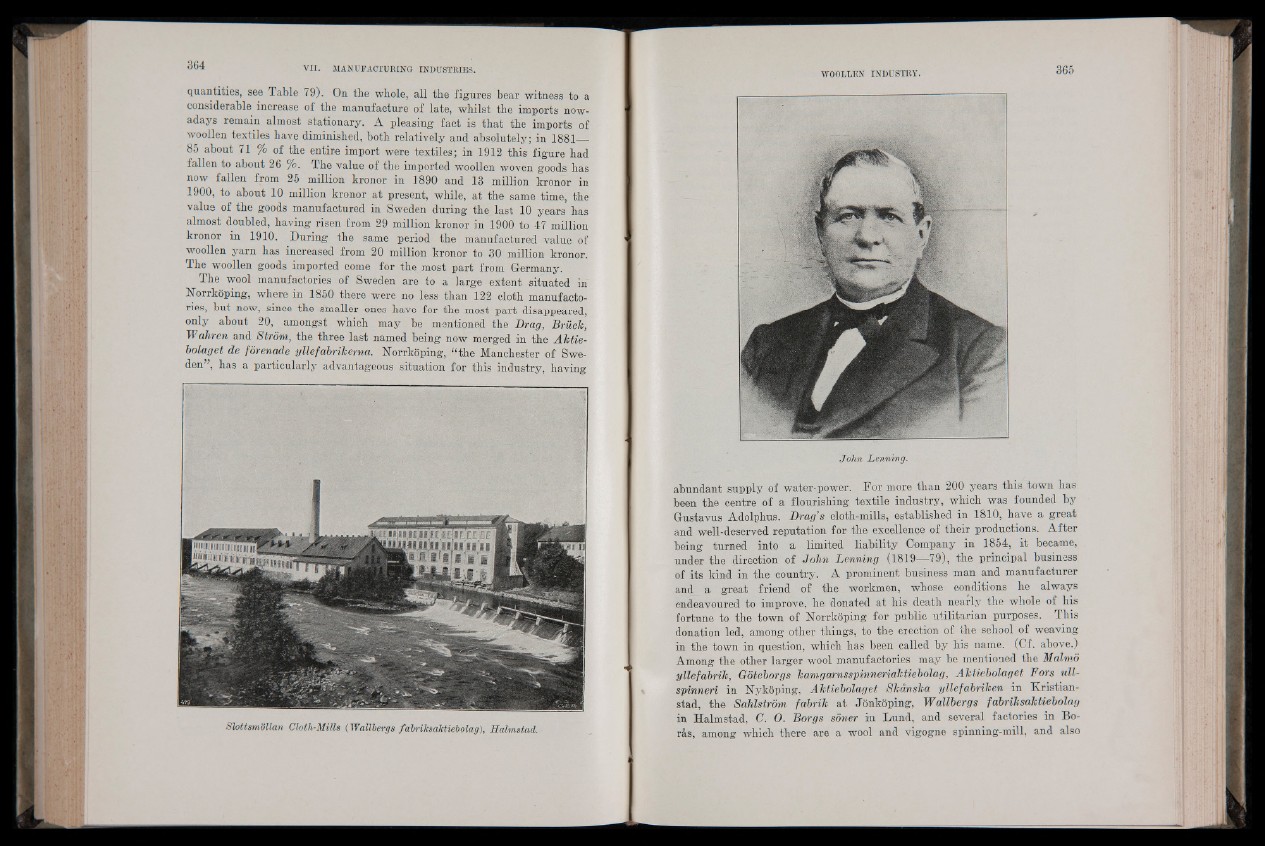
quantities, see Table 79). On the whole, all the figures bear witness to a
considerable increase of the manufacture of late, whilst the imports nowadays
remain almost stationary. A pleasing fact is that the imports of
woollen textiles have diminished, both relatively and absolutely; in 1881—
85 about 71 % of the entire import were textiles; in 1912 this figure had
fallen to about 26 °/o. The value of the imported woollen woven goods has
now fallen from 25 million kronor in 1890 and .13 million kronor in
1900, to about 10 million kronor at present, while, at the same time, the
value of the goods manufactured in Sweden during the last 1 0 years has
almost doubled, having risen from 29 million kronor in 1900 to 47 million
kronor in 1910. During the same period the manufactured value of
woollen yarn has increased from 2 0 million kronor to 30 million kronor.
The woollen goods imported come for the most part from Germany.
The wool manufactories of Sweden are to a large extent situated in
Norrkoping, where in 1850 there were no less than 122 cloth manufactories,
but now, since the smaller ones have for the most part disappeared,
only about 20, amongst which may be mentioned the Brag, Briick,
Wahren and Strom, the three last named being now merged in the Aktie-
bolaget de forenade yllefabrikerna. Norrkoping, “the Manchester of Sweden
, has a particularly advantageous situation for this industry, having
Slottsmollan Cloth-Mills (Wallbergs fabriks/xktiebolag), Halmstad.
John Lenning.
abundant supply of water-power. For more than 200 years this town has
been the centre of a flourishing textile industry, which was founded by
Gustavus Adolphus. Brag’s cloth-mills, established in 1810, have a great
and well-deserved reputation for the excellence of their productions. After
being turned into a limited liability Company in 1854, it became,
under the direction of John Lenning (1819—79), the principal business
of its kind in the country. A prominent business man and manufacturer
and a great friend of the workmen, whose conditions he always
endeavoured to improve, he donated at his death nearly the whole of his
fortune to the town of Norrkoping for public utilitarian purposes. This
donation led, among other things, to the erection of the school of weaving
in the town in question, which has been called by his name. (Cf. above.)
Among the other larger wool manufactories may be mentioned the Malmö
yllefabrik, Gôteborgs kamgarnsspinneriaktiebolag, Aktiebolaget Fors u 11-
spinneri in Nykoping, Aktiebolaget Skânska yllefabriken in Kristian-
stad, the Sahlstrom fabrik at Jônkoping, Wallbergs fabriksaktiebolag
in Halmstad, C. O. Borgs sôner in Lund, and several factories in Bc-
râs, among which there are a wool and vigogne spinning-mill, and also